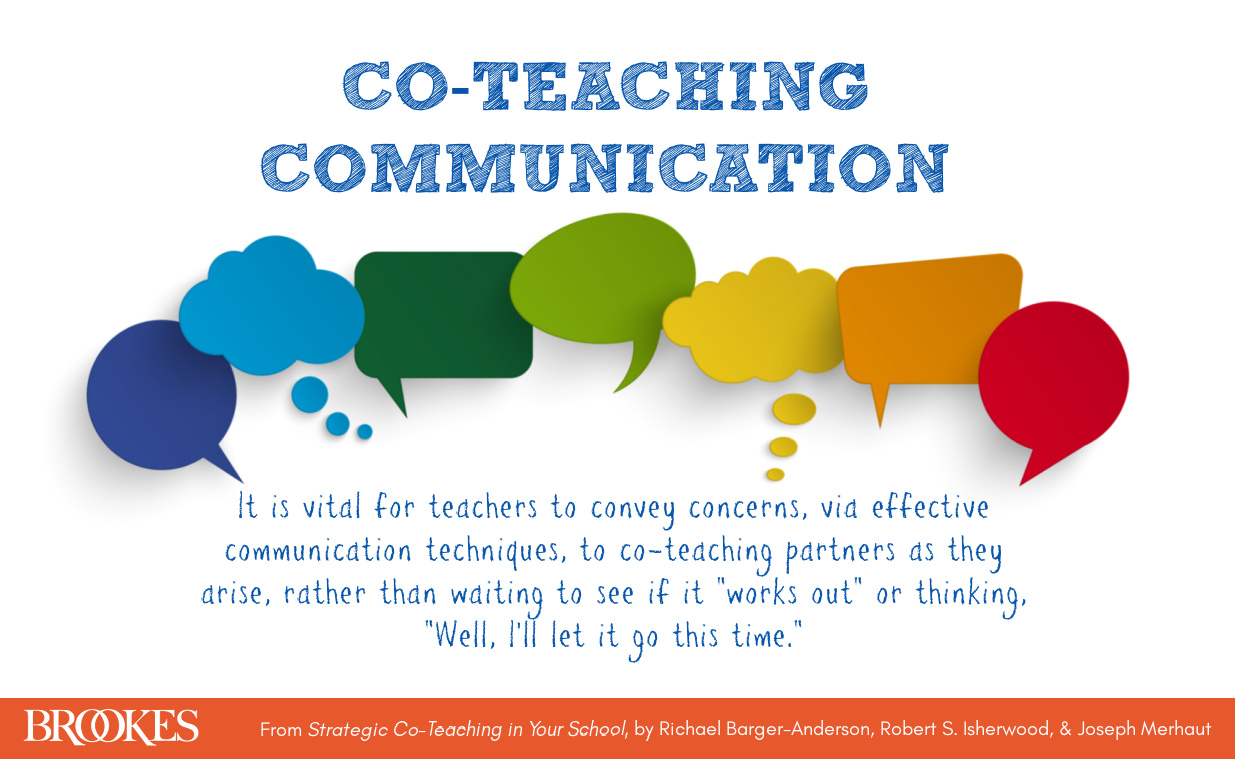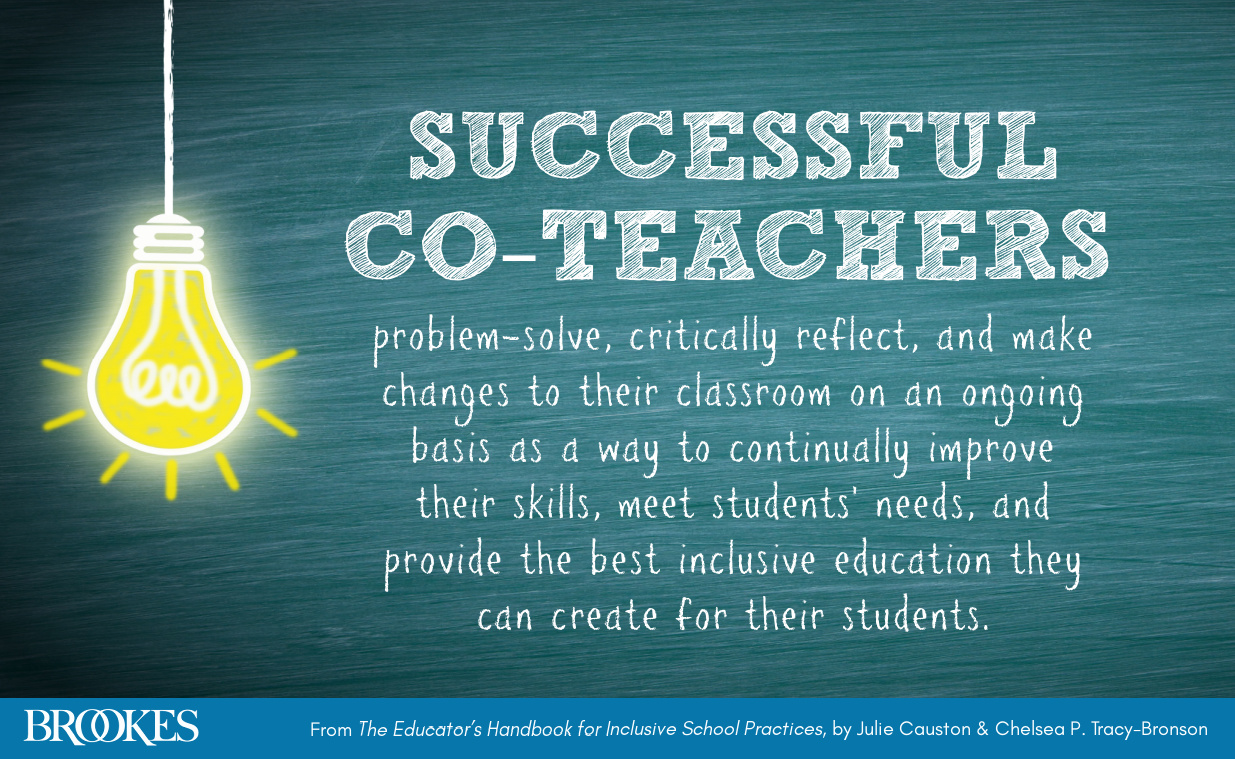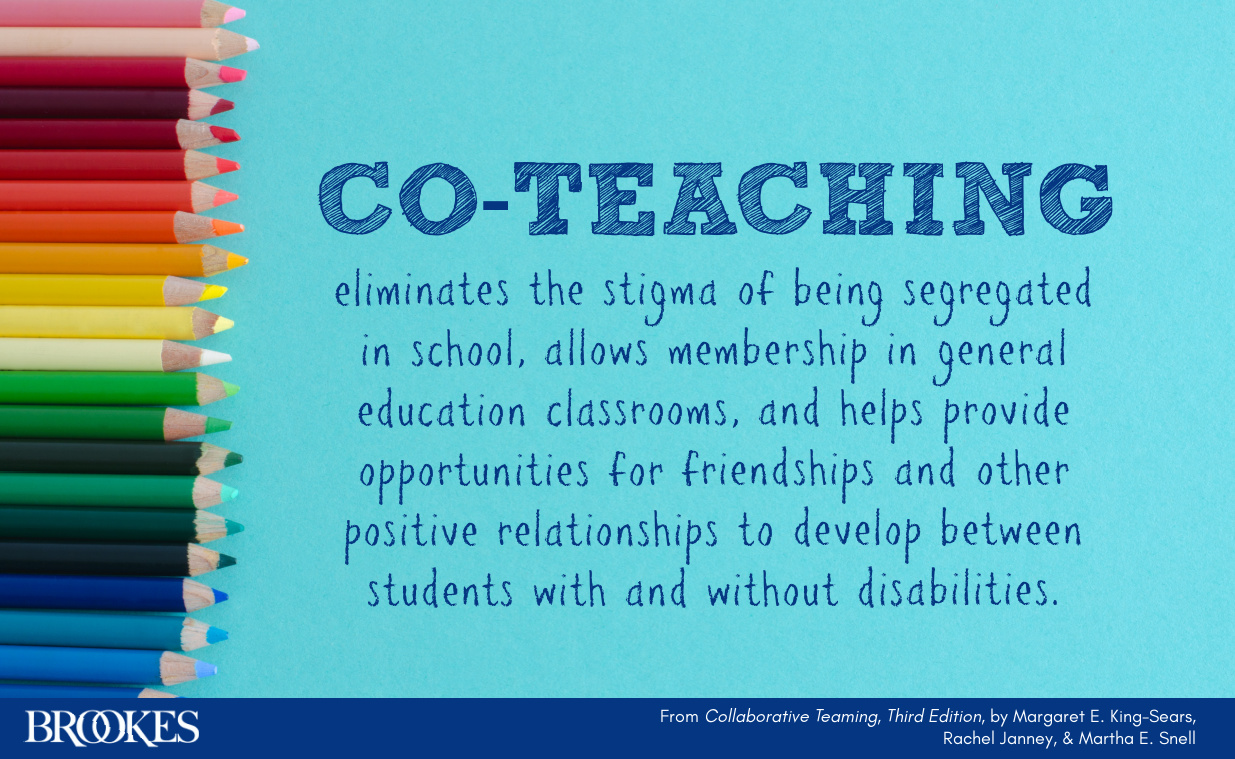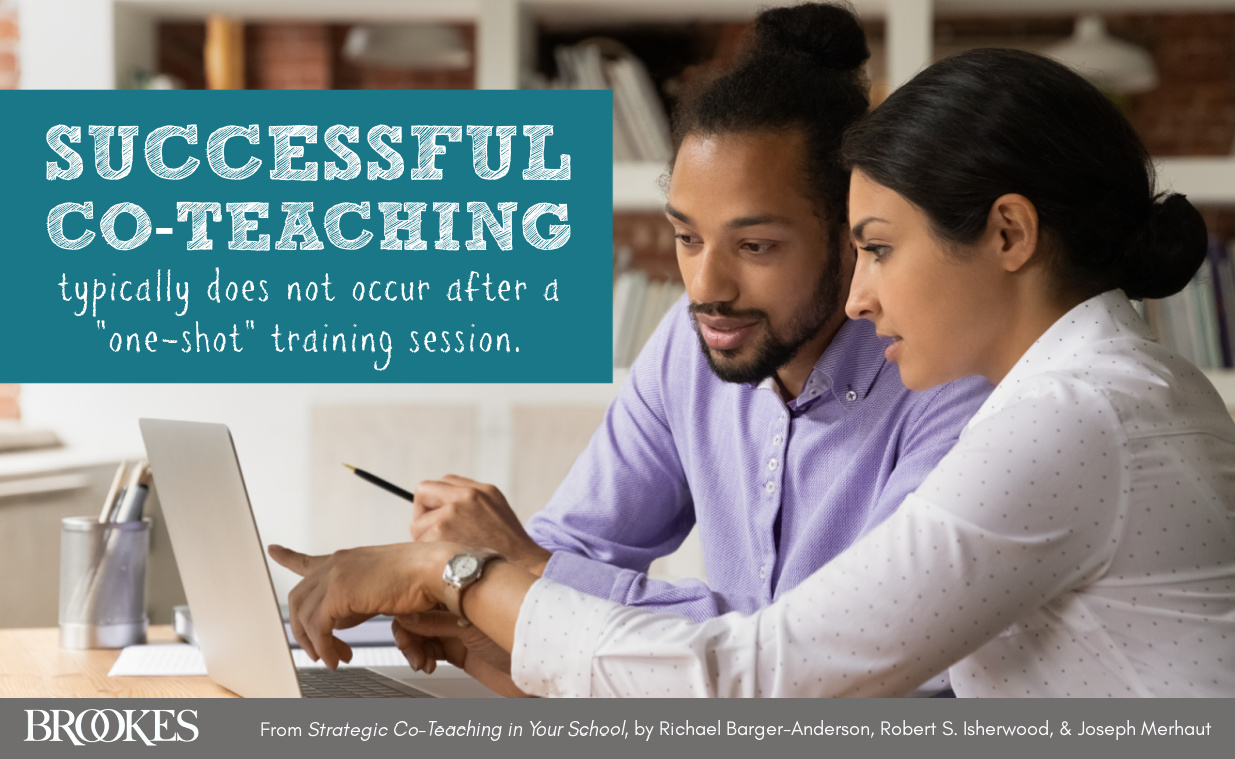What are some keys to a positive, productive, and respectful co-teaching partnership? In today’s post, we’re sharing a roundup of some of the best and most essential quotes on co-teaching from Brookes authors. If you’re currently co-teaching or preparing to team up in the future, keep these 10 key guidelines in mind to get off on the right foot and build a strong partnership with your fellow educator.
Approach co-teaching like a (good!) marriage.
“Co-teaching programs are much like a marriage: mutual respect, a shared vision, and open communication must exist in order for the program to work effectively.”
 From Making Preschool Inclusion Work, by Anne Marie Richardson-Gibbs, M.A., & M. Diane Klein, Ph.D., CCC-SLP
From Making Preschool Inclusion Work, by Anne Marie Richardson-Gibbs, M.A., & M. Diane Klein, Ph.D., CCC-SLP
Always act with the students’ best interests in mind.
“The question that guides decision making in schools should always be, ‘What is best for the students?’”
 From How to Co-Teach, by Elizabeth A. Potts, Ph.D., & Lori A. Howard, Ph.D.
From How to Co-Teach, by Elizabeth A. Potts, Ph.D., & Lori A. Howard, Ph.D.
Be open to learning from each other.
“Co-teachers can learn from each other and expand their own teaching experience and, by embracing their differences, become a stronger team.”
 From How to Co-Teach, by Elizabeth A. Potts, Ph.D., & Lori A. Howard, Ph.D.
From How to Co-Teach, by Elizabeth A. Potts, Ph.D., & Lori A. Howard, Ph.D.
Ensure that both teachers have equal roles in the classroom.
“Co-teachers should have equal roles. One teacher should not fill a role that could be done by a paraprofessional.”
 From Collaborative Teaming, Third Edition, by Margaret E. King-Sears, Ph.D., Rachel Janney, Ph.D., & Martha E. Snell, Ph.D.
From Collaborative Teaming, Third Edition, by Margaret E. King-Sears, Ph.D., Rachel Janney, Ph.D., & Martha E. Snell, Ph.D.
Involve paraprofessionals in the partnership.
“Paraprofessionals can be important partners in co-teaching approaches, if care is taken to delineate roles and provide appropriate training.”
 From Strategic Co-Teaching in Your School, by Richael Barger-Anderson, Ed.D., Robert S. Isherwood, Ed.D., & Joseph Merhaut, Ed.D., with invited contributors
From Strategic Co-Teaching in Your School, by Richael Barger-Anderson, Ed.D., Robert S. Isherwood, Ed.D., & Joseph Merhaut, Ed.D., with invited contributors
Share responsibility for all students.
“In a co-taught classroom, both teachers are responsible for all the students.”
 From How to Co-Teach, by Elizabeth A. Potts, Ph.D., & Lori A. Howard, Ph.D.
From How to Co-Teach, by Elizabeth A. Potts, Ph.D., & Lori A. Howard, Ph.D.
Communicate concerns quickly.
“It is vital for teachers to convey concerns, via effective communication techniques, to co-teaching partners as they arise, rather than waiting to see if it ‘works out’ or thinking, ‘Well, I’ll let it go this time.’”
 From Strategic Co-Teaching in Your School, by Richael Barger-Anderson, Ed.D., Robert S. Isherwood, Ed.D., & Joseph Merhaut, Ed.D., with invited contributors
From Strategic Co-Teaching in Your School, by Richael Barger-Anderson, Ed.D., Robert S. Isherwood, Ed.D., & Joseph Merhaut, Ed.D., with invited contributors
Build in planning time.
“It is not co-teaching if there is no co-planning.”
 From Reimagining Special Education, by Jenna M. Rufo, Ed.D., & Julie Causton, Ph.D.
From Reimagining Special Education, by Jenna M. Rufo, Ed.D., & Julie Causton, Ph.D.
Reflect and make changes continually.
“Successful co-teachers problem-solve, critically reflect, and make changes to their classroom on an ongoing basis as a way to continually improve their skills, meet students’ needs, and provide the best inclusive education they can create for their students!”
 From The Educator’s Handbook for Inclusive School Practices, by Julie Causton, Ph.D., & Chelsea P. Tracy-Bronson, M.A.
From The Educator’s Handbook for Inclusive School Practices, by Julie Causton, Ph.D., & Chelsea P. Tracy-Bronson, M.A.
Keep in mind how co-teaching benefits students.
“Co-teaching eliminates the stigma of being segregated in school, allows membership in general education classrooms, and helps provide opportunities for friendships and other positive relationships to develop between students with and without disabilities.”
 From Collaborative Teaming, Third Edition, by Margaret E. King-Sears, Ph.D., Rachel Janney, Ph.D., & Martha E. Snell, Ph.D.
From Collaborative Teaming, Third Edition, by Margaret E. King-Sears, Ph.D., Rachel Janney, Ph.D., & Martha E. Snell, Ph.D.
Remember, success takes time and training.
“Successful co-teaching typically does not occur after a ‘one-shot’ training session. Co-teaching tactics take time to develop via successful collaborative teacher interactions, training, and support.”
 From Strategic Co-Teaching in Your School, by Richael Barger-Anderson, Ed.D., Robert S. Isherwood, Ed.D., & Joseph Merhaut, Ed.D., with invited contributors
From Strategic Co-Teaching in Your School, by Richael Barger-Anderson, Ed.D., Robert S. Isherwood, Ed.D., & Joseph Merhaut, Ed.D., with invited contributors
Do you have a favorite quote or insight about co-teaching? Add it in the comments section! And for more tips and guidance on co-teaching, be sure to check out the Related Posts below.
Stay up to date on the latest posts, news, strategies, and more!
Sign up for one of our FREE newslettersMore posts like this

We Stopped Using “I” and Began Using “We”: A Co-Teaching Success Story
March 7, 2017
Co-Teaching: 10 Practical Tips to Strengthen Your Partnership
July 26, 2016


Write a Comment
Your email address will not be published. Required fields are marked *
Post a Comment